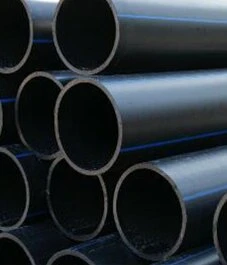Dec . 25, 2024 17:05 Back to list
Electrofusion Jointing Techniques for HDPE Pipes in Pipeline Construction and Maintenance
Understanding HDPE Pipe Electrofusion Welding
High-Density Polyethylene (HDPE) pipes are widely used in various applications, including water distribution, sewage systems, and gas supply networks. One of the primary methods for joining HDPE pipes is electrofusion welding, a technique that ensures strong and reliable connections. This article delves into the process, advantages, and applications of HDPE pipe electrofusion welding.
What is Electrofusion Welding?
Electrofusion welding is a process that utilizes heat generated by electrical resistance to achieve a fusion bond between two HDPE surfaces. This technique involves the use of specialized fittings embedded with heating elements that, when energized, melt the surfaces of the pipes and fittings to create a joint. The process is particularly effective for joining pipes of varying diameters and wall thicknesses, making it highly versatile.
The Electrofusion Welding Process
1. Preparation The first step in electrofusion welding involves preparing the surfaces of the HDPE pipes and fittings. This includes cleaning the surfaces to remove any contaminants such as dirt, moisture, or oxidation. Proper preparation is crucial to ensure a good quality weld.
2. Fitting Installation Once the surfaces are prepared, the electrofusion fitting is placed over the ends of the pipes. The fitting is designed to ensure proper alignment and positioning.
3. Welding A welding machine is then connected to the electrofusion fitting. The machine supplies a specified voltage and current to the heating elements embedded in the fitting. As the heating elements generate heat, the HDPE material begins to melt and fuse together. The duration and intensity of the heating process are crucial and typically depend on factors such as the pipe size and wall thickness.
4. Cooling After the heating cycle is complete, the power supply is turned off, and the newly formed joint is left to cool down. During this cooling phase, the molten HDPE solidifies, creating a strong and durable bond.
Advantages of Electrofusion Welding
- Strength and Durability Electrofusion welding results in joints that are as strong as or stronger than the pipe material itself. This is essential for applications that involve high pressures or extreme environmental conditions.
hdpe pipe electrofusion welding

- Reduced Risk of Leaks The seamless nature of the electrofusion joint minimizes the risk of leaks, making it ideal for critical applications like potable water systems and gas distribution.
- Flexibility Electrofusion fittings can be used to join pipes of different diameters and wall thicknesses, providing flexibility in design and installation.
- Speed and Efficiency The electrofusion welding process is relatively quick, allowing for faster installation times compared to traditional welding methods. Additionally, it requires fewer tools and equipment, which can further reduce labor costs.
Applications of HDPE Pipe Electrofusion Welding
HDPE pipe electrofusion welding is utilized in a variety of sectors, including
- Water Supply Systems Ensuring a reliable and leak-proof connection is crucial for the distribution of potable water.
- Sewage and Drainage Electrofusion welding provides robust joints that can withstand corrosive environments and high flow rates.
- Natural Gas Distribution The strength and leak resistance of electrofusion joints make them ideal for gas pipelines.
Conclusion
HDPE pipe electrofusion welding is an essential technique in modern piping systems, offering a reliable, efficient, and robust method for creating strong joints. The versatility of this welding process, combined with its benefits of reduced leakage and enhanced strength, makes it a preferred choice for many industries. As infrastructure development continues to grow, the role of electrofusion welding in ensuring durable and effective piping solutions will only become more significant. Whether in municipal water supply or industrial applications, the future of piping hinges on the advancements in welding technologies like electrofusion.
-
Durable PP Rigid Sheet: Lightweight, Chemical Resistant Solutions
NewsAug.21,2025
-
PVC Grey Sheet for Extraction: Chemical Resistant & Durable
NewsAug.19,2025
-
Durable PVC Pipe Fittings for Plumbing & Irrigation Needs
NewsAug.18,2025
-
HDPE Steel Belt Reinforced Spiral Corrugated Pipe | High Strength
NewsAug.17,2025
-
HDPE Pipe Fittings: Durable, Leak-Proof Solutions
NewsAug.16,2025
-
Premium CPVC Sheet: High-Temp & Chemical Resistant Solutions
NewsAug.15,2025

